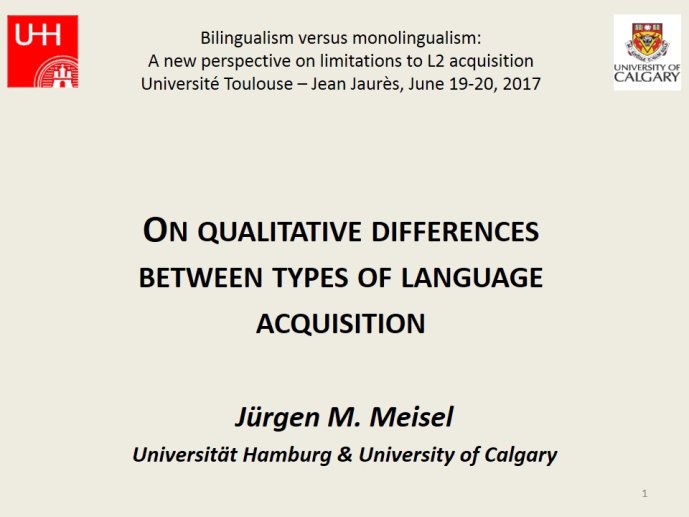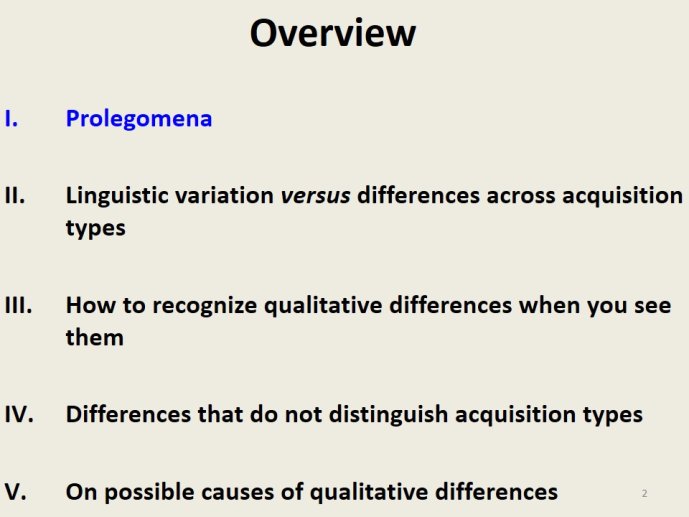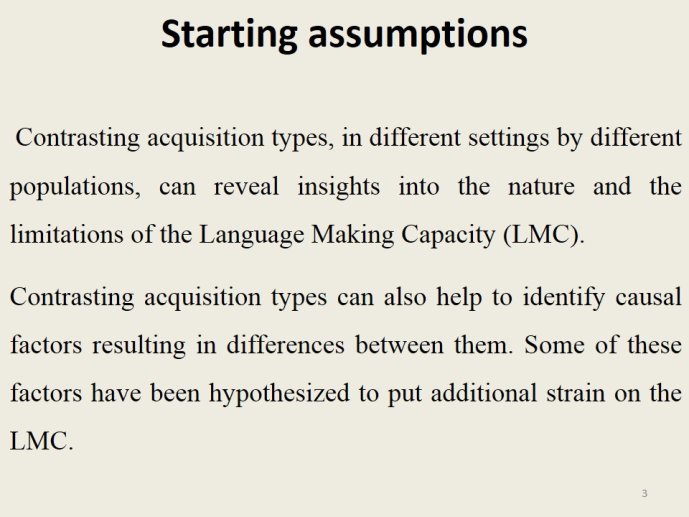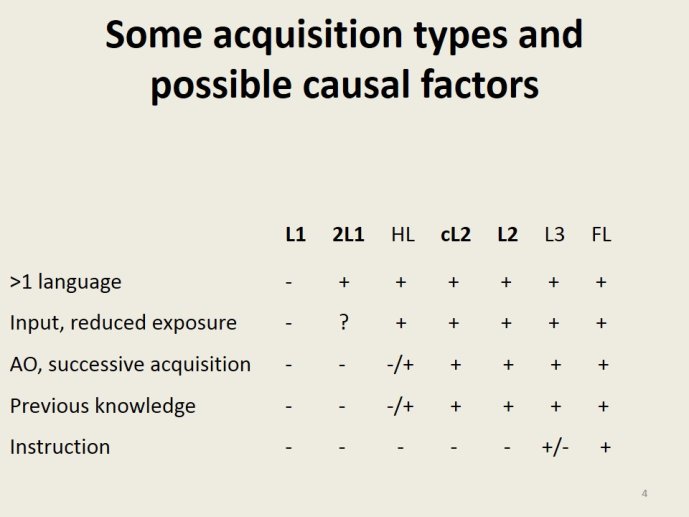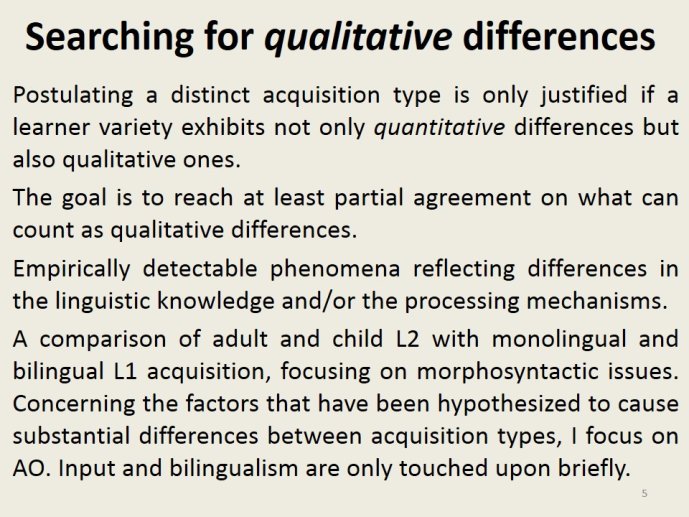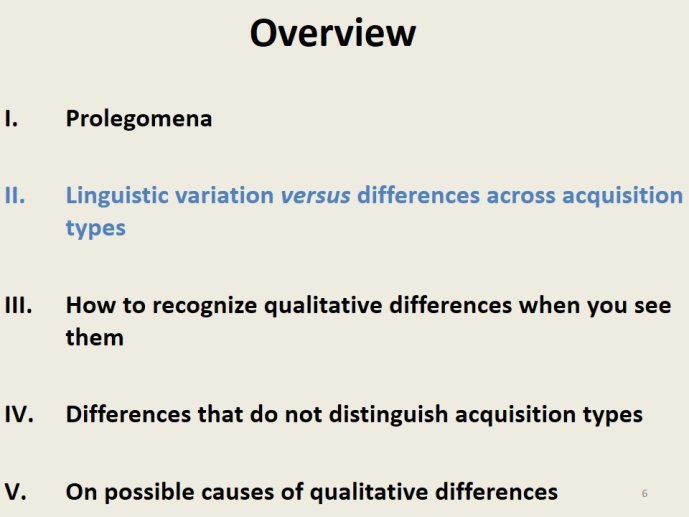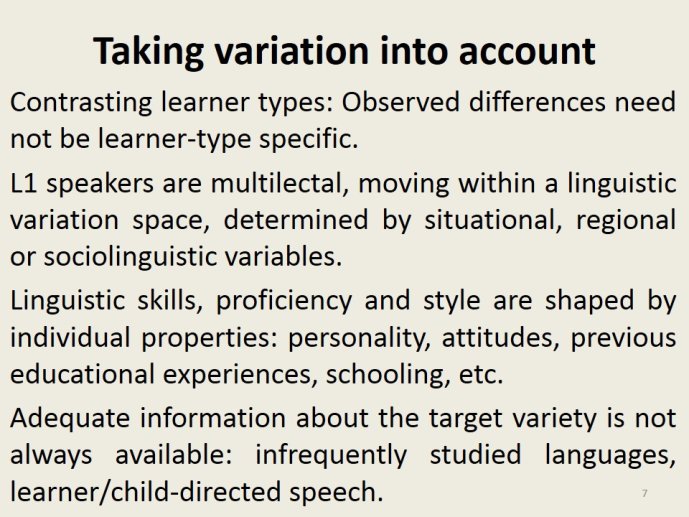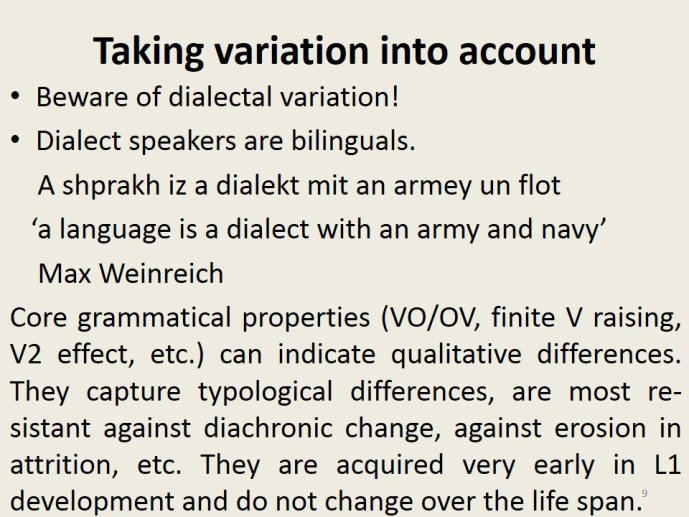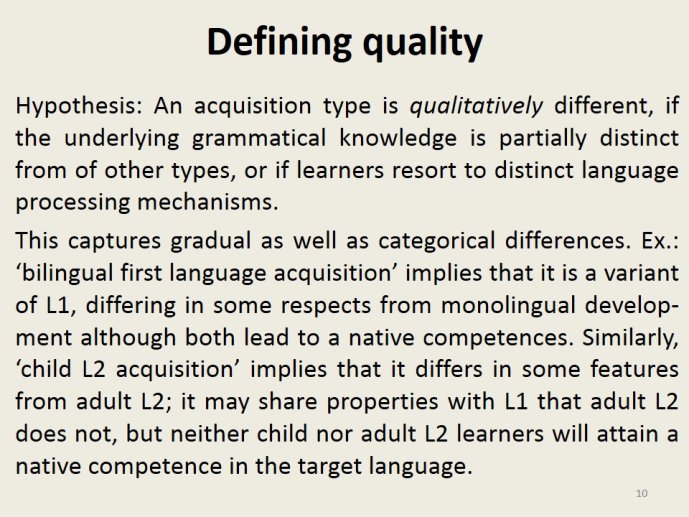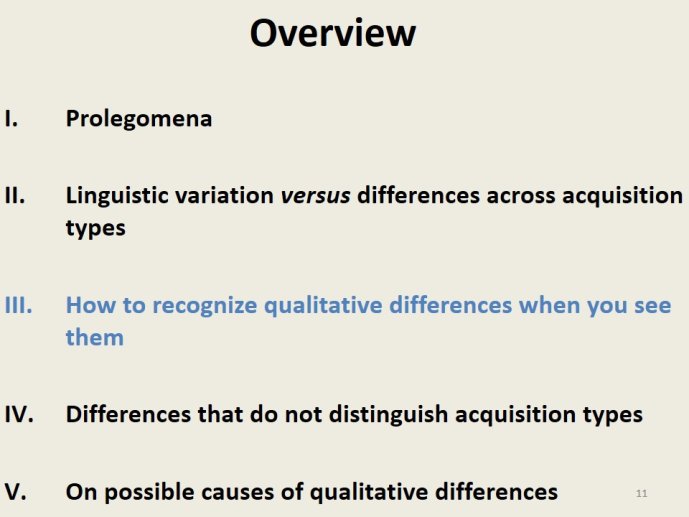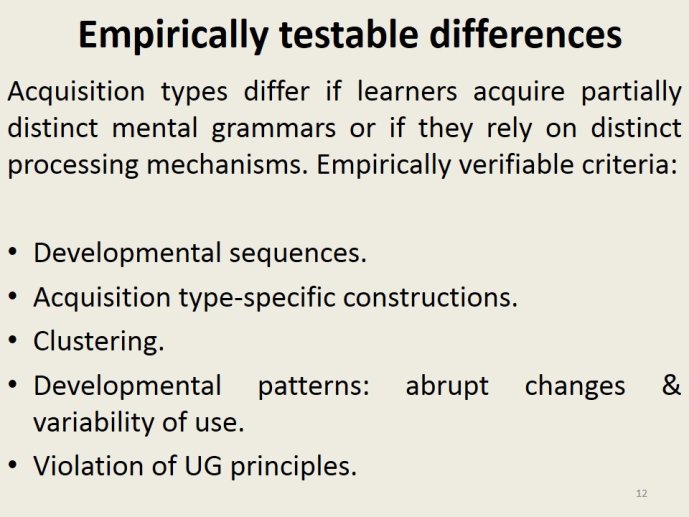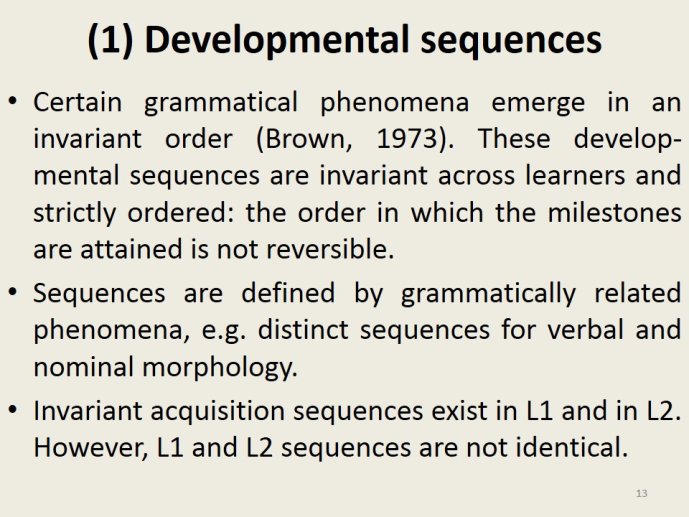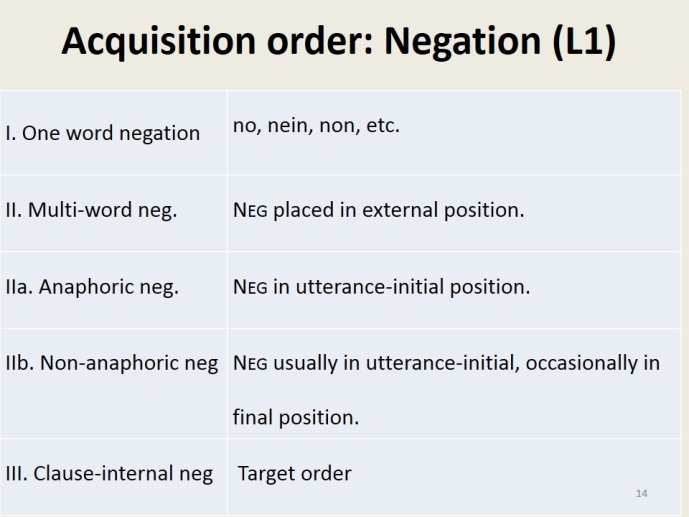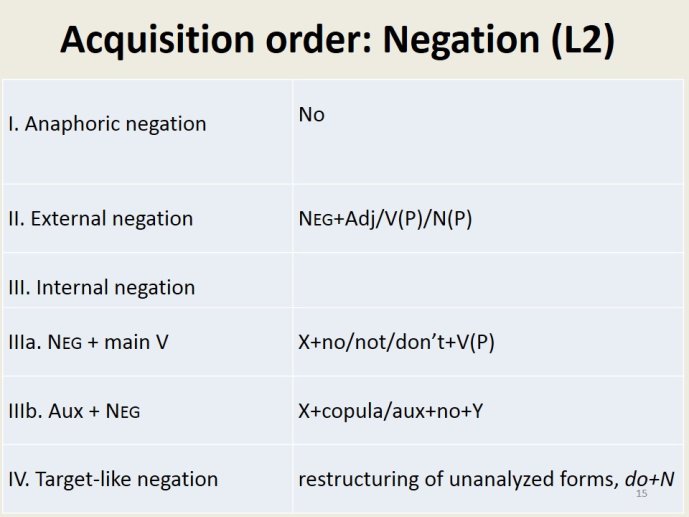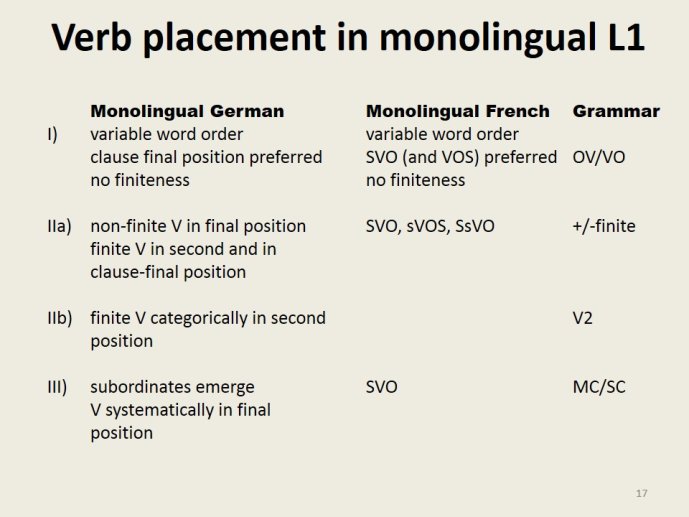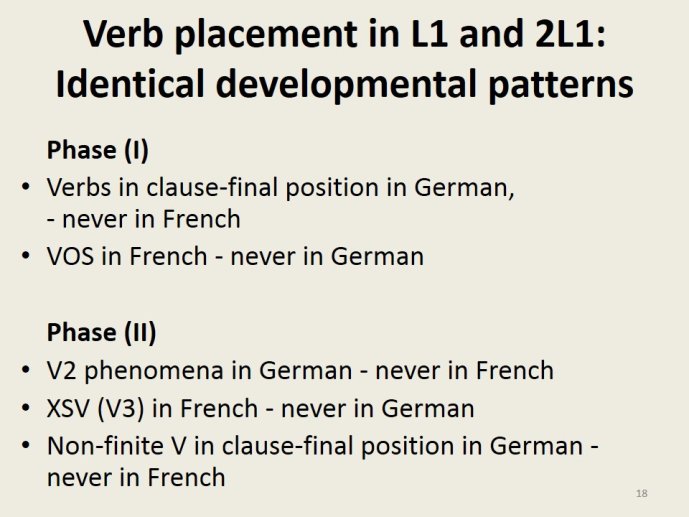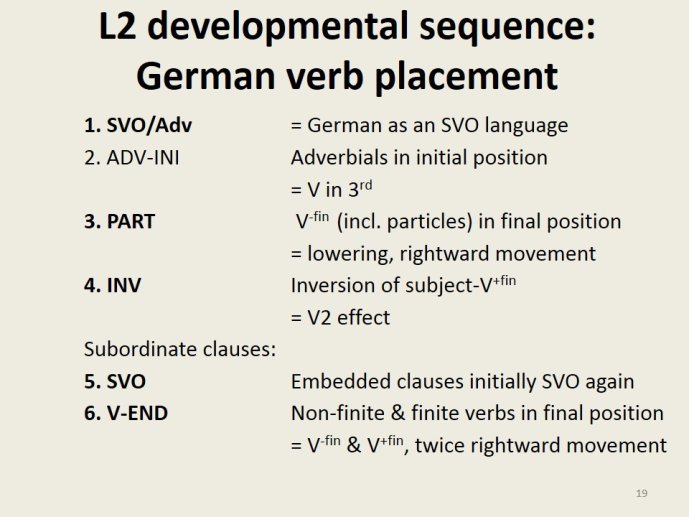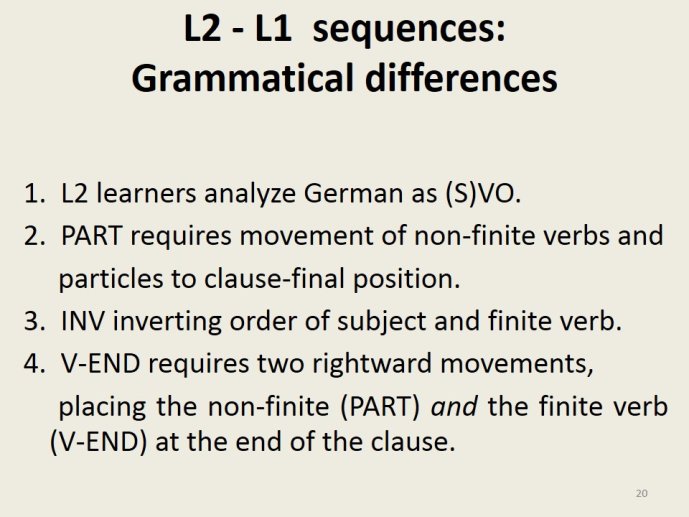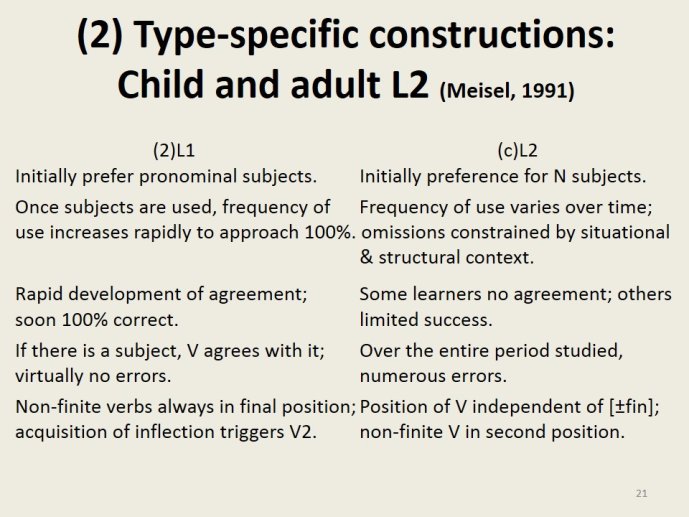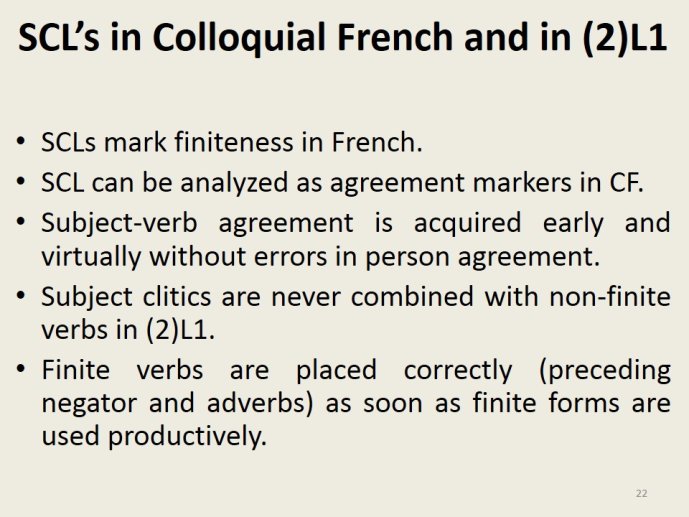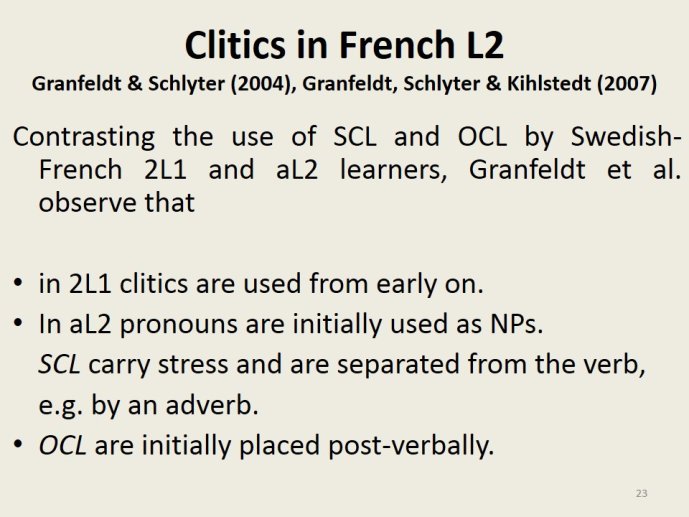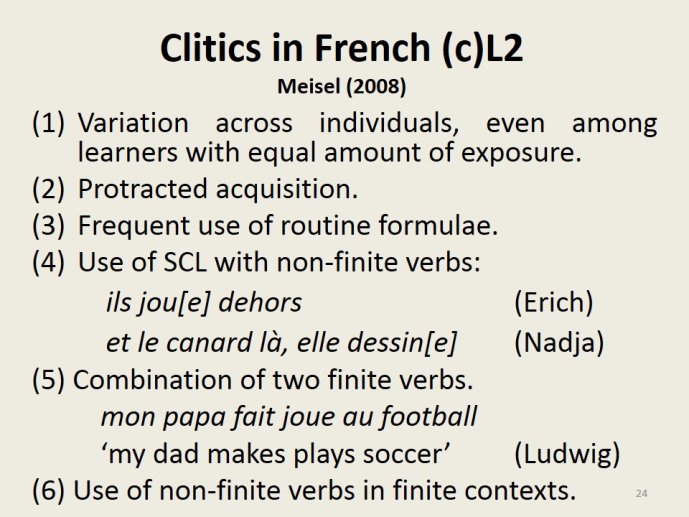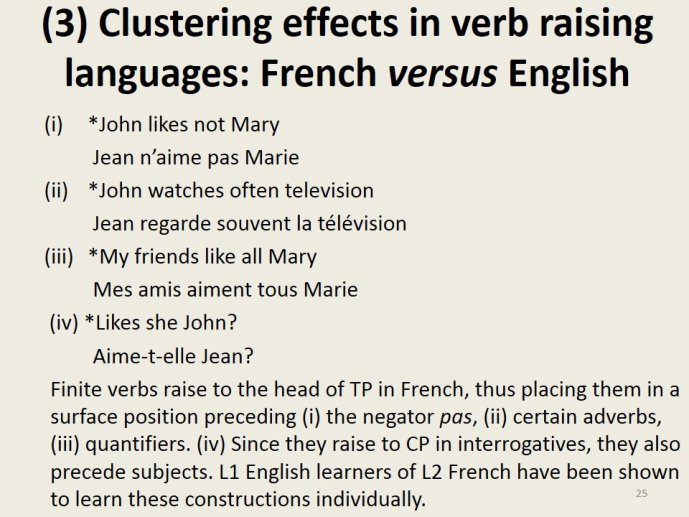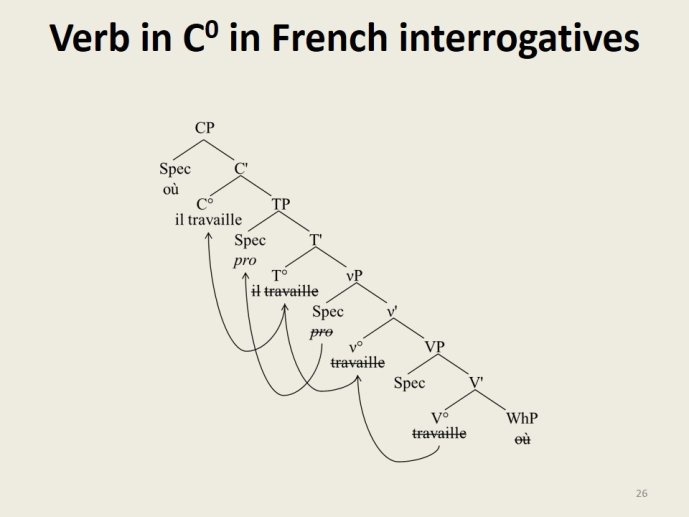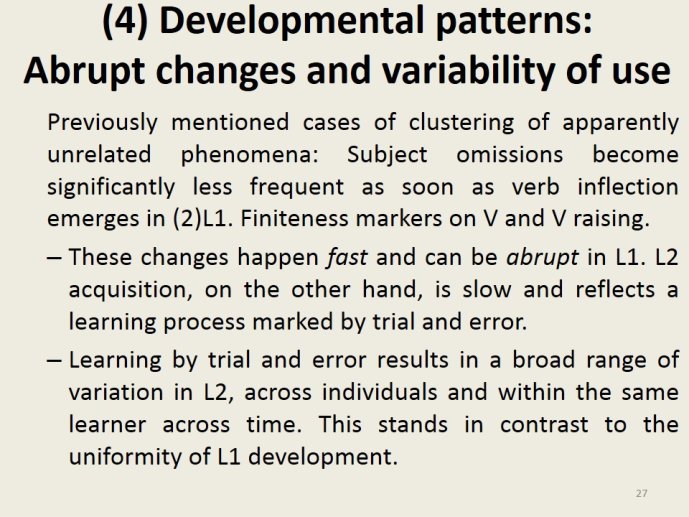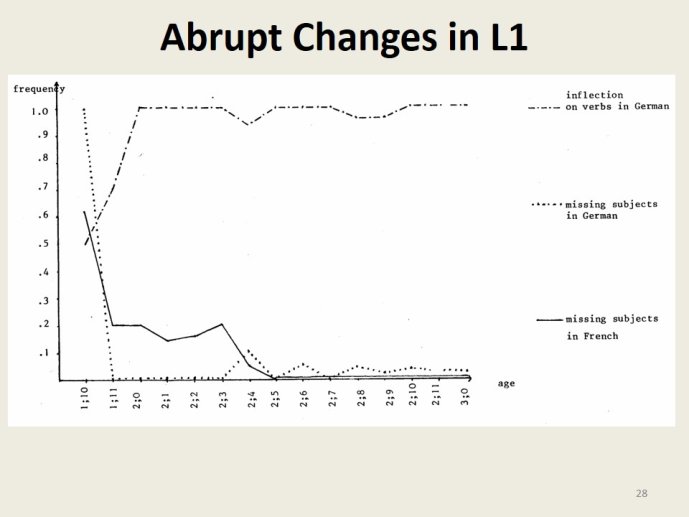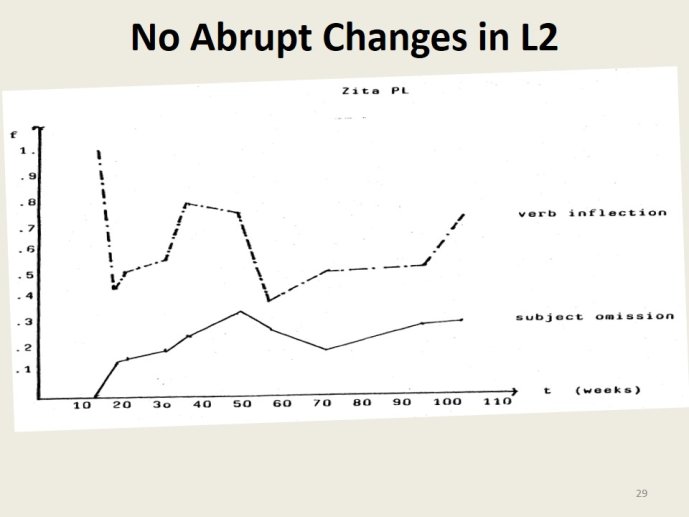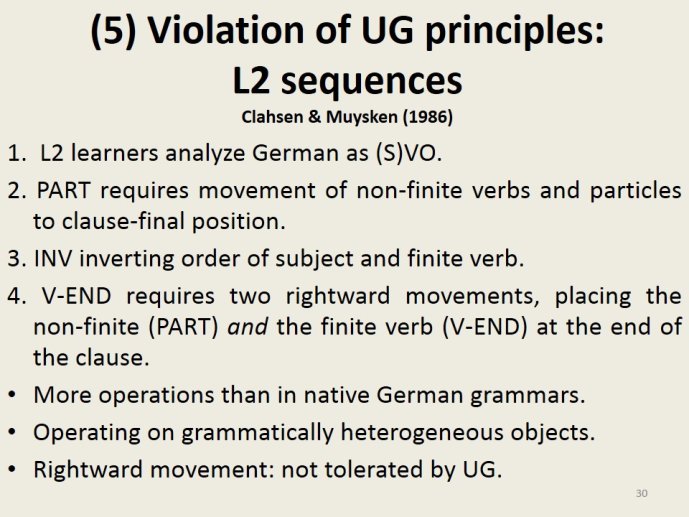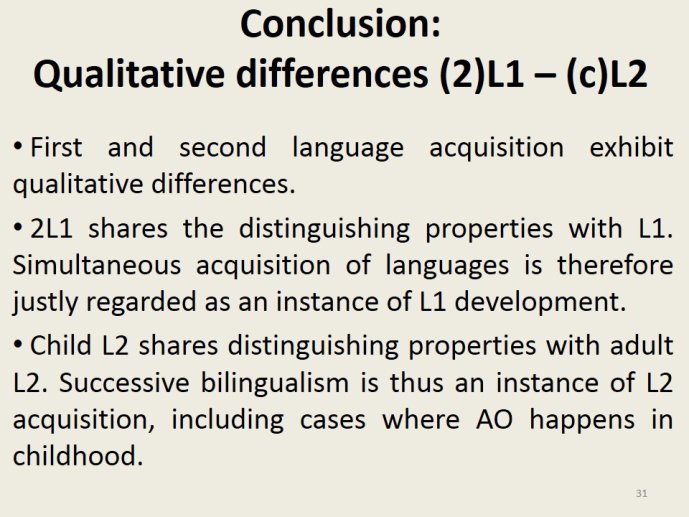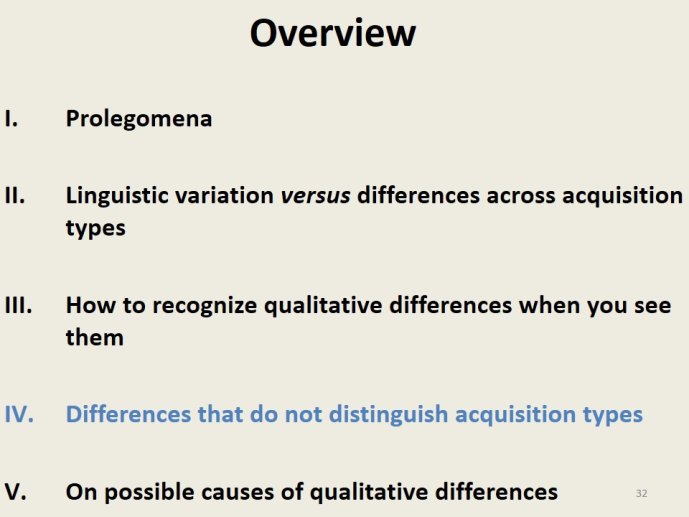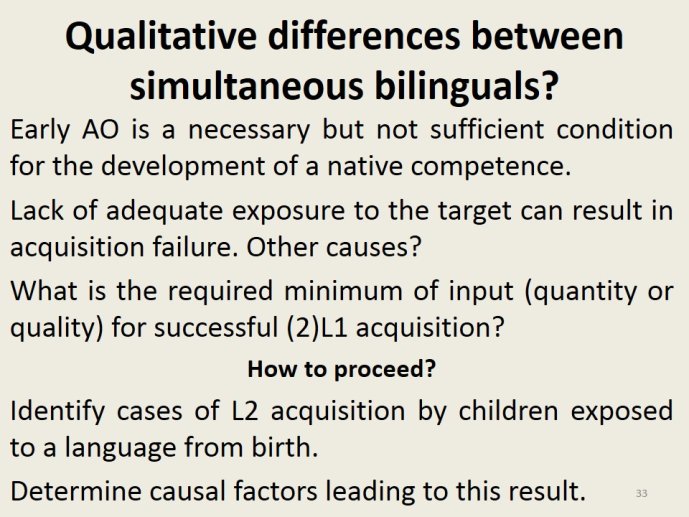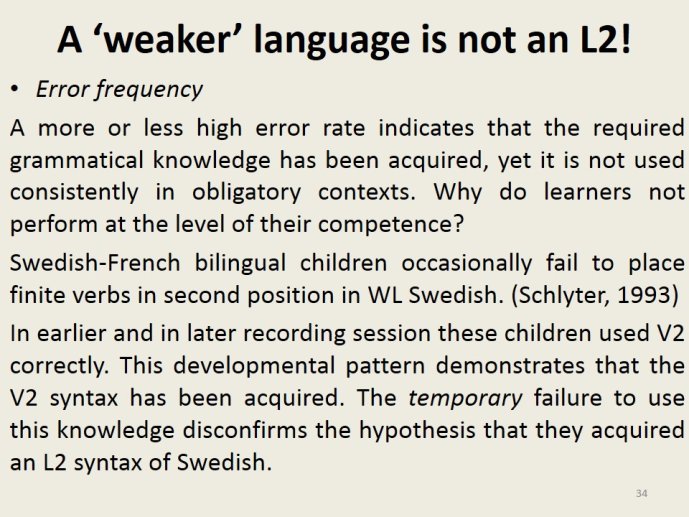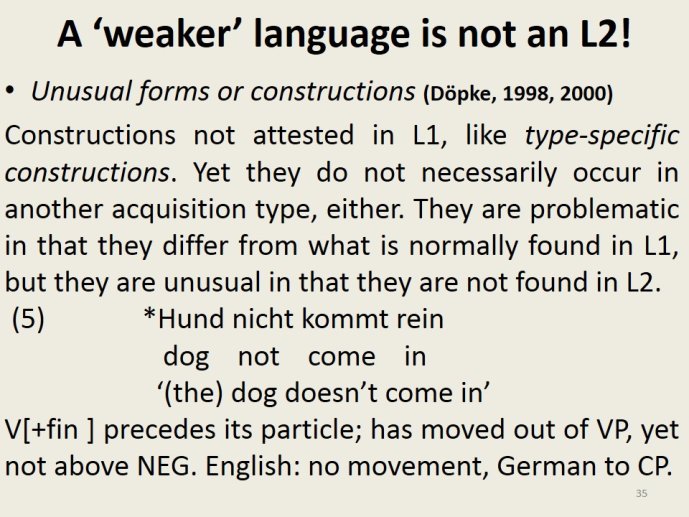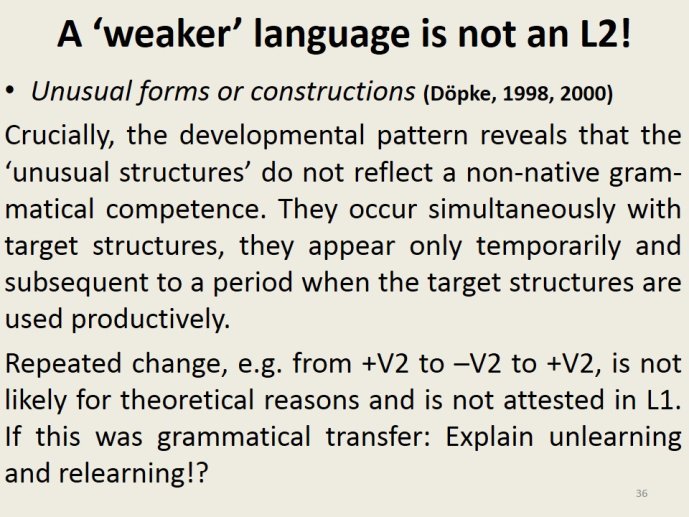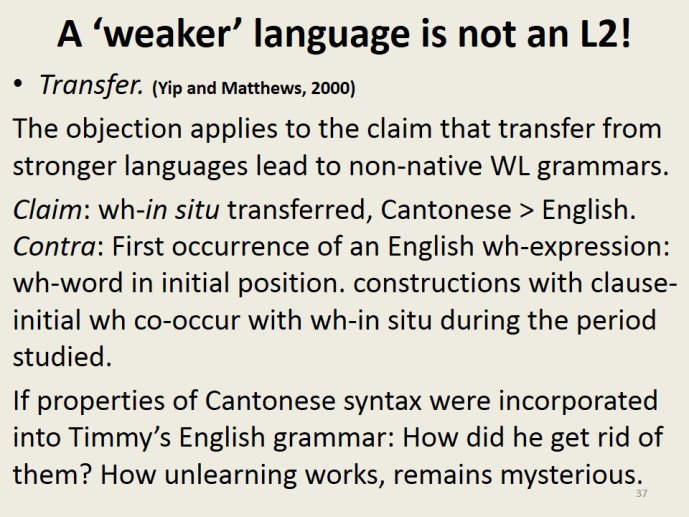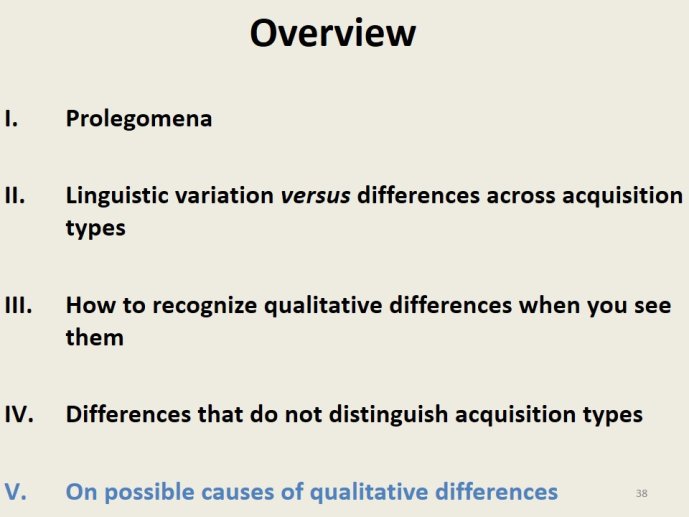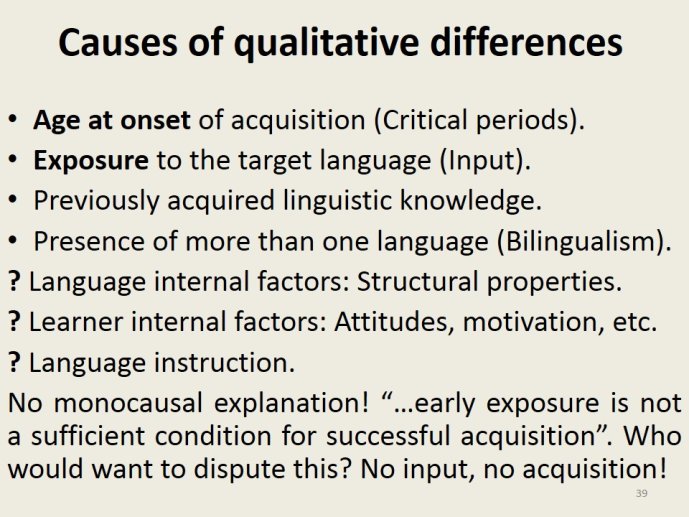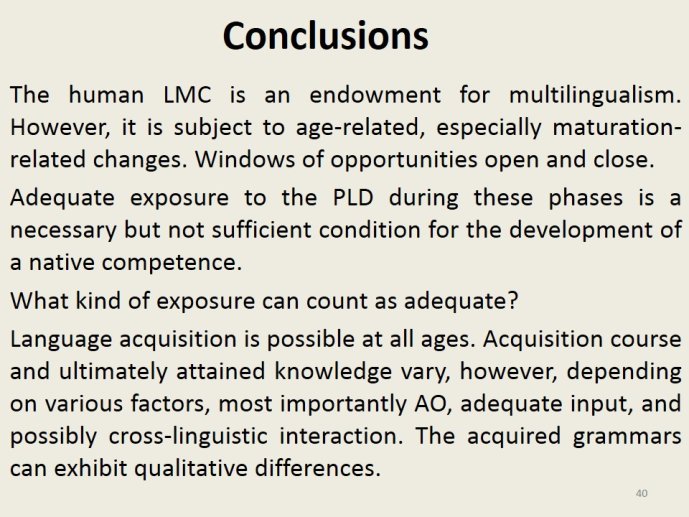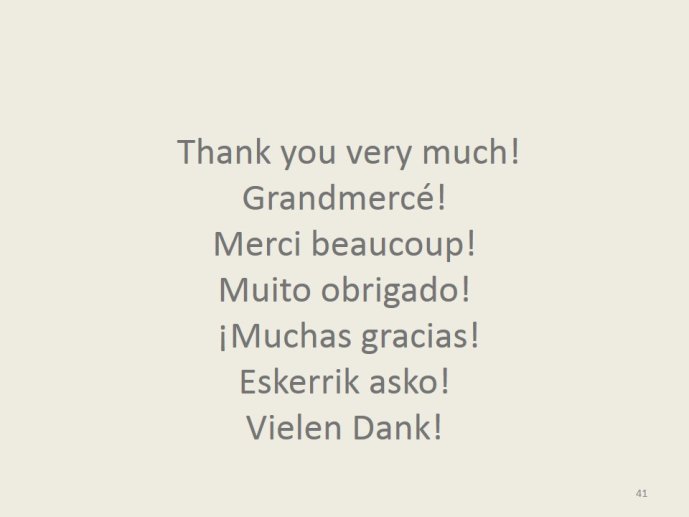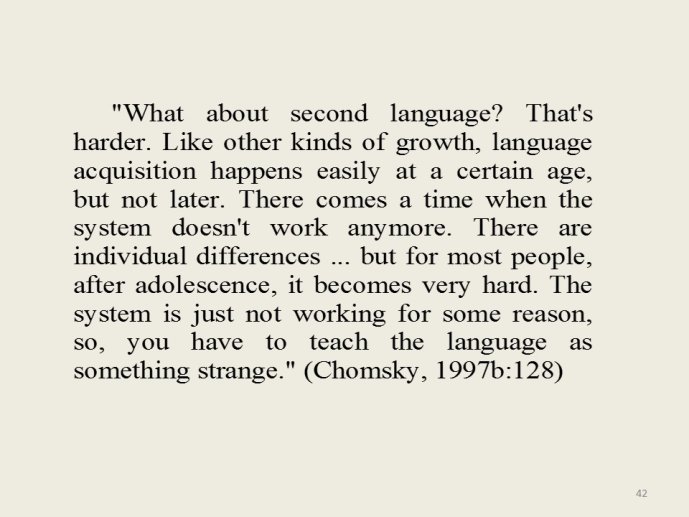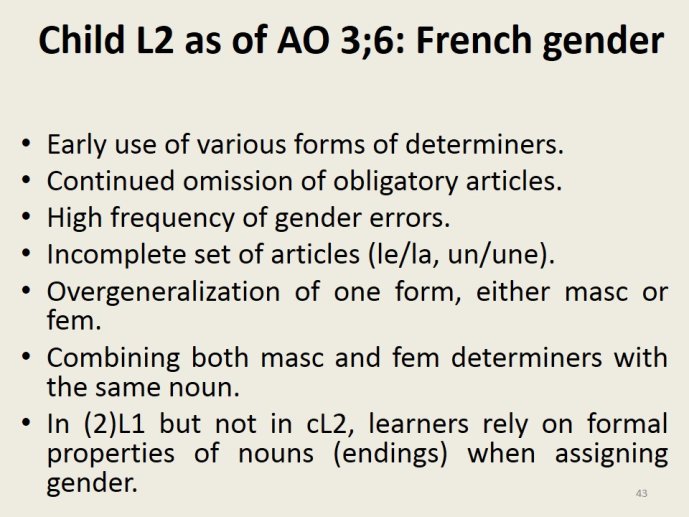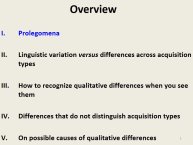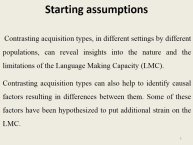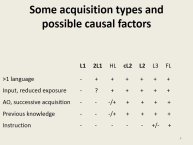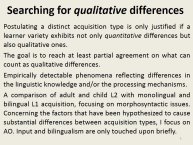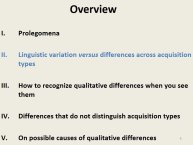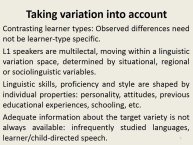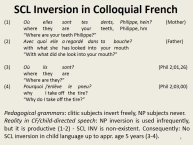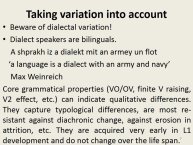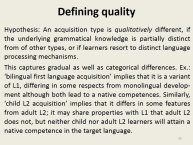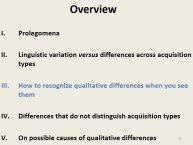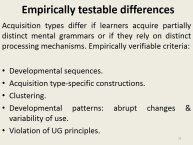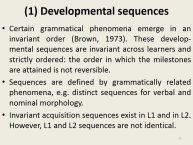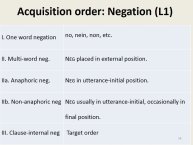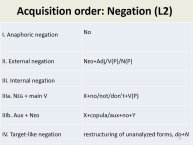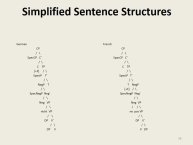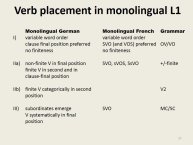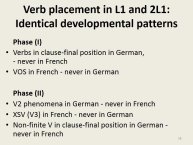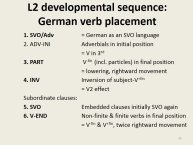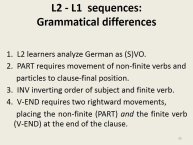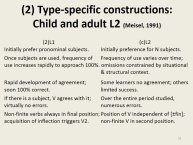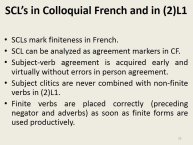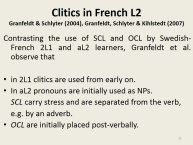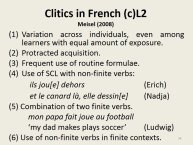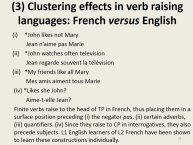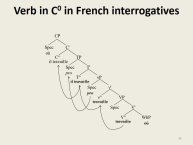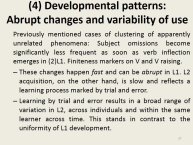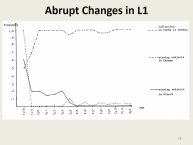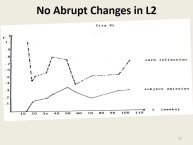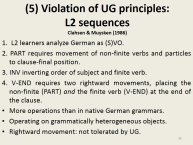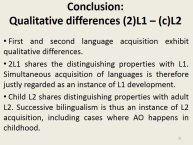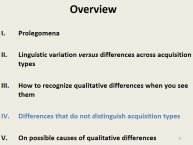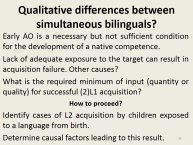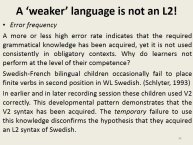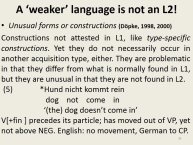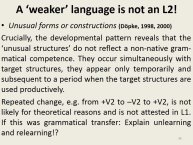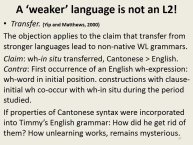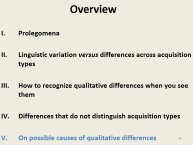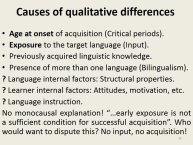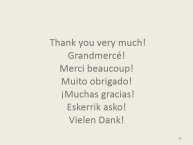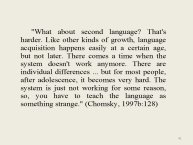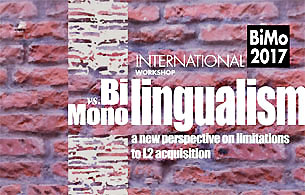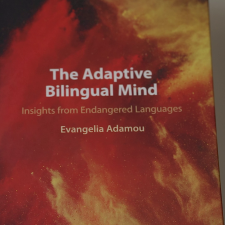Notice
On Qualitative Differences between Types of Language Acquisition / Jürgen Meisel
- document 1 document 2 document 3
- niveau 1 niveau 2 niveau 3
Descriptif
On Qualitative Differences between Types of Language Acquisition / Jürgen Meisel, in colloque "Bilingualism vs. monolingualism: a new perspective on limitations to L2 acquisition" organisé par le laboratoire Octogone-Lordat (Université Toulouse 2) sous la responsabilité de Barbara Köpke (UT2J), Holger Hopp (Technische Universität Braunschweig), Tanja Kupisch (Universität Konstanz), Université Toulouse Jean Jaurès, 19-20 juin 2017.
The thematic focus of this workshop lies in the questionwhether there exist qualitative differences between L2 and L1 acquisition. Thishas been a core issue in acquisition studies ever since L2 researchers turnedtheir attention to mental activities of learners, 50 years ago. Theepistemological rationale motivating this research agenda is the expectation ofgaining insights into the nature of the human language faculty. Comparisons ofacquisition types, e.g. monolingual (L1) and bilingual (2L1) first and child(cL2) and adult (L2) second language acquisition, can reveal parallels anddifferences in their speech that should enable us to identify factors causingsuch differences to appear. In other words, we might discover the possibilitiesand limits of the language making capacity.
However, few of the insights achieved by past research onsimultaneous and successive bilingualism are commonly valued as such, althoughthe claim that acquisition types differ in numerous ways is not contested. Yetthe consensus ends here. What counts as ‘qualitative’ difference is acontroversial issue, not to mention the problem of determining causal factors.I therefore propose to state explicitly the criteria defining qualitativedifferences and discuss them in some detail, for in distinguishing acquisitiontypes we can only refer to these.
It would be naïve and probably not even desirable to aim ata broad consensus on all issues involved. But if we succeed in identifyingempirical findings that do constitute differences distinguishing acquisitiontypes, a more solidly fact-based discussion will be feasible. As a first step,I argue that not every example of variable use qualifies as a criterion todistinguish acquisition types; past research has not duly consideredvariability of use within and across individuals and learner types, includingL1. Secondly, I emphasize an apparently self-evident point that tends to beoverlooked: quantitative differences are not qualitative ones. Thirdly, it mustbe stated explicitly whether observed differences reflect different kinds oflinguistic knowledge, acquisition principles, or processing mechanisms.Fourthly, contrasting ‘languages’ as a whole does not yield useful results; weneed to know whether attested differences emerge in the lexicon or in thevarious components of grammar. Finally, I examine what the identified qualitativedifferences reveal about the relevance of possible causal factors.
Intervention / Responsable scientifique
Thème
Documentation
Références bibliographiques
Meisel, J. (2017). On first language attrition in second language learners, Linguistic Approaches to Bilingualism, 6, vol. 7, 734-738.
Meisel, J. M. (2014). Heritage language learners: Incomplete acquisition of grammar in early childhood. Perspectives in the study of Spanish language variation: Papers in honor of Carmen Silva-Corvalán, 435-462.
Meisel, J. M. (2014). On timing in monolingual and bilingual acquisition: Grammatical properties interacting with age of onset and input. Linguistic Approaches to Bilingualism, 3, vol. 4, 357-362.
Meisel, J. et al. (2013). Language Acquisition and Change: A Morphosyntactic Perspective. Edinburgh, Scotland: Edinburgh University Press, 202 p.
Meisel, J. M. (1996). Parameters in acquisition, in Paul Fletcher, Brian MacWhinney, The handbook of child language, 9-35.
Meisel, J. (1989). Early differentiation of languages in bilingual children, in K. Hyltenstam & L. Obler (eds.), Bilingualism Across the Lifespan : Aspects of Acquisition, Maturity, and Loss, Cambridge, Cambridge University Press, 13-40.
Meisel, J. (1989). Les phases initiales du développement de notions temporelles, aspectuelles et de modes d'action: Étude basée sur le langage d'enfants bilingues Français-Allemand, Lingua, 4, vol. 66, Issue 4, August 1985, 321-374. [En ligne : https://www.sciencedirect.com/science/article/pii/0024384185900336].
Dans la même collection
-
Monolingual and multilingual learners of French. What are the effects of language background on spe…
BontempsMarieMonolingual and multilingual learners of French. What are the effects of language background on spelling? / Marie Bontemps
-
Attrition and (incomplete) acquisition of Italian answering strategies / Irene Caloi
Attrition and (incomplete) acquisition of Italian answering strategies / Irene Caloi, in colloque "Bilingualism vs. monolingualism: a new perspective on limitations to L2 acquisition" organisé par
-
Do temporarily induced code-switching modes alternate executive performance in late sequential bili…
Do temporarily induced code-switching modes alternate executive performance in late sequential bilinguals?
-
Processing variability in L2 learning: insights from articulatory training / Natalia Kartushina, Cl…
Processing variability in L2 learning: insights from articulatory training / Natalia Kartushina, Clara Martin
-
Age-related effects on language control and executive control: a behavioral-electrophysiological in…
MassaÉmilieAge-related effects on language control and executive control: a behavioral-electrophysiological investigation / Émilie Massa
-
Language, Development and the Bilingual Brain / Arturo E. Hernandez
HernandezArturo E.Language, Development and the Bilingual Brain / Arturo E. Hernandez, in colloque "Bilingualism vs. monolingualism: a new perspective on limitations to L2 acquisition" organisé par le laboratoire
-
Trilingual effects at the microstructure and macrostructure levels in children’s narratives / Mihae…
PirvulescuMihaelaTrilingual effects at the microstructure and macrostructure levels in children’s narratives / Mihaela Pirvulescu, in colloque "Bilingualism vs. monolingualism: a new perspective on limitations to L2
-
Language Processing in Bilinguals: Distinguishing Early Sequential from Simultaneous / Laura Sabour…
SabourinLauraLanguage Processing in Bilinguals: Distinguishing Early Sequential from Simultaneous / Laura Sabourin, Santa Vinerte, in colloque "Bilingualism vs. monolingualism: a new perspective on limitations to
-
Implicit causality as a predictive cue in child L1 and adult L2 processing of German: Evidence from…
Implicit causality as a predictive cue in child L1 and adult L2 processing of German: Evidence from visual-world eyetracking / Judith Schlenter
-
Cross-linguistic influence at the feature-level ? Evidence from Dutch-German bilingual preschoolers…
Cross-linguistic influence at the feature-level ? Evidence from Dutch-German bilingual preschoolers. How bilinguals are more monolingual-like than assumed / Antje Stoehr
-
Subject position in heritage Spanish in the Netherlands and the US: a case for cross-linguistic inf…
Subject position in heritage Spanish in the Netherlands and the US: a case for cross-linguistic influence / Brechje van Osch, in colloque "Bilingualism vs. monolingualism: a new perspective on
-
Can French-English bilinguals process verb-particle constructions in a native-like manner? A self-p…
Can French-English bilinguals process verb-particle constructions in a native-like manner? A self-paced reading study / Alexandre Herbay, in colloque "Bilingualism vs. monolingualism: a new
Sur le même thème
-
The Adaptive Bilingual Mind
AdamouEvangeliaLa chercheuse Evangelia Adamou (LACITO) présente son ouvrage "The Adaptive Bilingual Mind" (2021, Cambridge University Press).
-
Attrition and (incomplete) acquisition of Italian answering strategies / Irene Caloi
Attrition and (incomplete) acquisition of Italian answering strategies / Irene Caloi, in colloque "Bilingualism vs. monolingualism: a new perspective on limitations to L2 acquisition" organisé par
-
Do temporarily induced code-switching modes alternate executive performance in late sequential bili…
Do temporarily induced code-switching modes alternate executive performance in late sequential bilinguals?
-
Processing variability in L2 learning: insights from articulatory training / Natalia Kartushina, Cl…
Processing variability in L2 learning: insights from articulatory training / Natalia Kartushina, Clara Martin
-
Language, Development and the Bilingual Brain / Arturo E. Hernandez
HernandezArturo E.Language, Development and the Bilingual Brain / Arturo E. Hernandez, in colloque "Bilingualism vs. monolingualism: a new perspective on limitations to L2 acquisition" organisé par le laboratoire
-
Language Processing in Bilinguals: Distinguishing Early Sequential from Simultaneous / Laura Sabour…
SabourinLauraLanguage Processing in Bilinguals: Distinguishing Early Sequential from Simultaneous / Laura Sabourin, Santa Vinerte, in colloque "Bilingualism vs. monolingualism: a new perspective on limitations to
-
Implicit causality as a predictive cue in child L1 and adult L2 processing of German: Evidence from…
Implicit causality as a predictive cue in child L1 and adult L2 processing of German: Evidence from visual-world eyetracking / Judith Schlenter
-
Subject position in heritage Spanish in the Netherlands and the US: a case for cross-linguistic inf…
Subject position in heritage Spanish in the Netherlands and the US: a case for cross-linguistic influence / Brechje van Osch, in colloque "Bilingualism vs. monolingualism: a new perspective on
-
Can French-English bilinguals process verb-particle constructions in a native-like manner? A self-p…
Can French-English bilinguals process verb-particle constructions in a native-like manner? A self-paced reading study / Alexandre Herbay, in colloque "Bilingualism vs. monolingualism: a new
-
Transfer and derivational complexity in the wh-movement of heritage speakers and L2 learners: A bid…
Transfer and derivational complexity in the wh-movement of heritage speakers and L2 learners: A bidirectional study / Holger Hopp, in colloque "Bilingualism vs. monolingualism: a new perspective on
-
Bilinguismes et compliance phonique
JEP-TALN-RECITAL 2016 - Vendredi 8 juillet 2016 Session commune JEP/TALN 3 Bilinguismes et compliance phonique Marie Philippart de Foy, Véronique Delvaux, Kathy Huet, Myriam Piccaluga, Rima Rabeh and
-
Les catégories grammaticales dans la construction du bilinguisme
LauneyMichelLes catégories grammaticales dans la construction du bilinguisme (avec focus sur la catégorie de la personne

